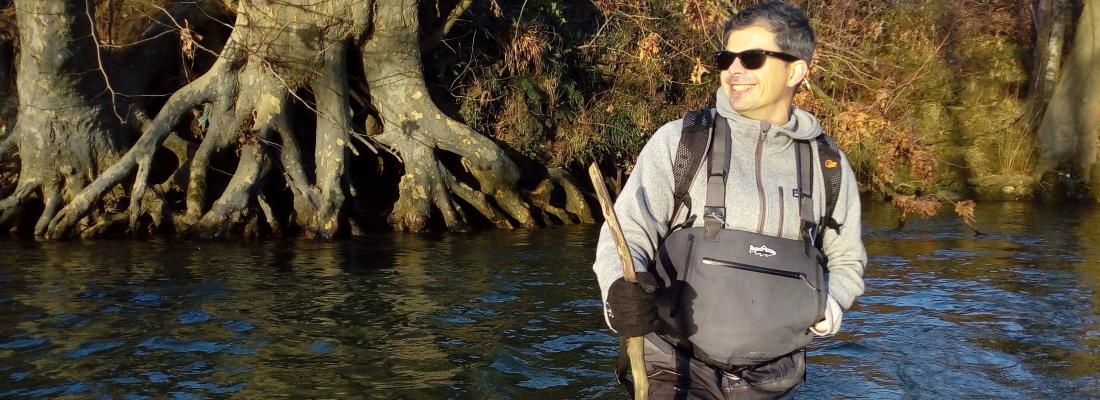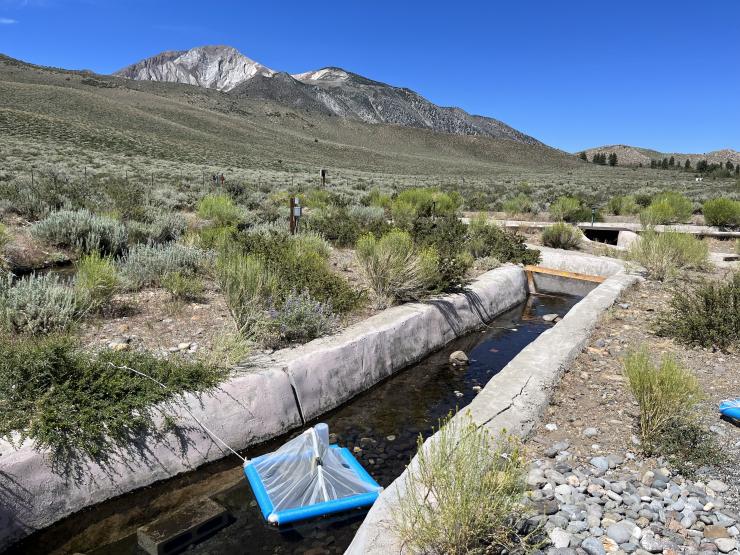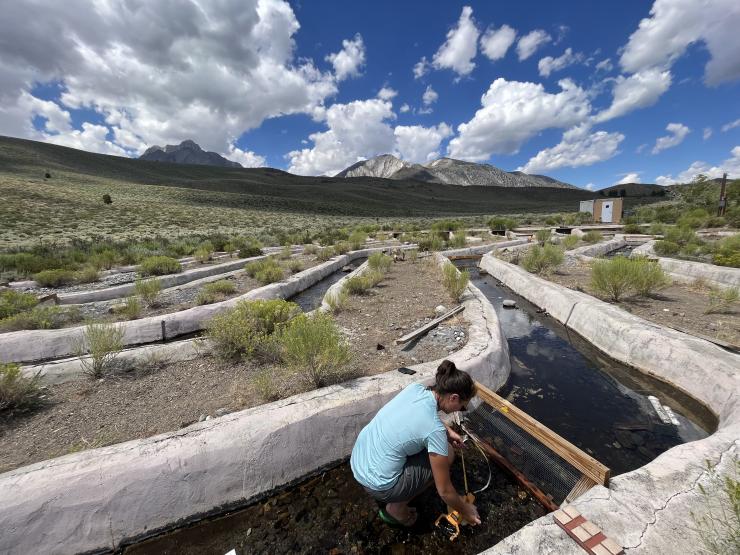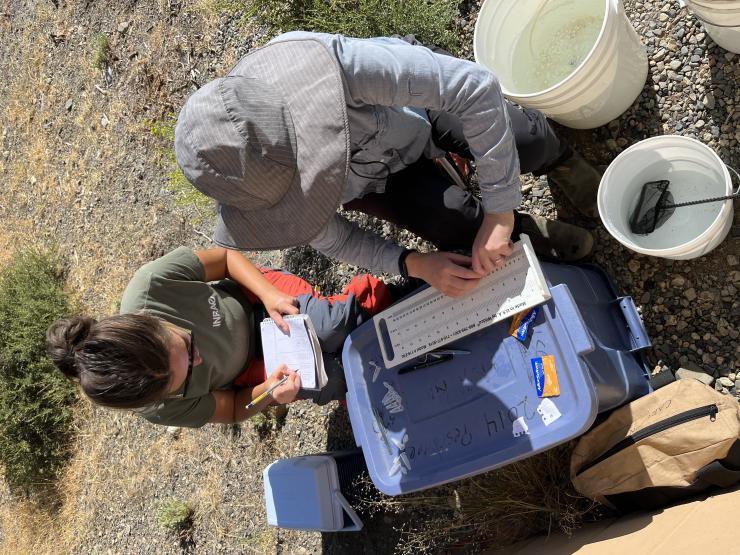Climate change and risks Reading time 3 min
One year into MacLIFE international laboratory
Published on 30 August 2022


On 10 June 2021, a new International Associated Laboratory (LIA), MacLIFE, was launched.
In June 2021, INRAE, the University of California, Berkeley, the University of Pau and the University of the Basque Country in Bilbao created a new international associated laboratory: the LIA MacLIFE. By bringing together complementary disciplinary expertise, this new “laboratory without walls” dedicates its efforts to knowledge on the impacts of climate change on freshwater organisms and ecosystems to support new policies for the management of aquatic environments.
A conversation with Mathieu Buoro, a biologist specialising in the evolutionary ecology of migratory fish at the ECOBIOP Joint Research Unit (INRAE/UPPA) and INRAE coordinator of the MacLIFE International Associated Laboratory (LIA).
“MacLIFE takes this cooperation to the next level by providing a more coherent and comprehensive scientific framework and strengthening tripartite partnerships”
Why this international associated laboratory?
Since 2012, our research group ECOBIOP (INRAE/UPPA) has maintained close bilateral ties with our colleagues in Bilbao and UC Berkeley through the joint supervision of PhD students and post-doctoral researchers, as well as frequent researcher exchanges between our laboratories. The MacLIFE LIA takes this cooperation to the next level by providing a more coherent and comprehensive scientific framework and strengthening tripartite partnerships. The goal is to forge an international outlook on a theme for tomorrow’s scientists and boost the Institute’s visibility and attractiveness on the international academic stage.
“A first joint experiment has just been recently completed at a University of California experimental site and we now aim to extend this study in France by conducting experiments in ECOBIOP's Lapitxuri experimental channel”
Tell us about the new scheme
The LIA enables us to better organise our activities and to respond to calls for proposals on a joint basis. We initially received support from the E2S UPPA I-Site consortium via INRAE, allowing us to launch more comprehensive projects. In fact, the first joint experiment was recently completed at a University of California experimental site. We now aim to extend this study in France by conducting experiments in ECOBIOP's Lapitxuri experimental channel. We also have two thesis in preparation on the bioenergetic and phenological responses of migratory fish to climate change using long-term monitoring programs of migratory fish populations.
In parallel, we are developing simulation tools to explore management scenarios of migratory fish facing climate change. An ongoing thesis is currently under co-supervision with the University of California, Berkeley, funded by INRAE, Région Nouvelle-Aquitaine, OFB and in part by a Fulbright grant. We aim to develop this approach for salmon populations in Europe and Pacific salmon populations on the west coast of the United States. Finally, with our colleagues from Bilbao, we will also study for the first time the functioning of river ecosystems in the sub-Antarctic region (Kerguelen Archipelago) under the influence of ice melting and how salmonid species can impact the river ecosystems functioning and their native communities composition.
Photo Essay: The first joint experiment at a University of California experimental site
For more information on the experiment visit the MacLIFE website
Sticky and emergence traps designed by Stephane Glise (ECOBIOP)

Copyright: Mathieu Buoro
Capture of benthic invertebrates, waterflow and benthic algal concentration measurements

Copyright: Charlotte Evangelista & Albert Ruhi
Tagging and measuring Brown trout

“The LIA lends us the clout needed to respond to international calls for proposals and at the same time diversify our approaches at the local level.”
How does the LIA take this research further at a global level?
Due to a dispersion of projects and resources, we still know little about the functioning and network dynamics of aquatic ecosystems and their inhabitants. Pooling our efforts, expertise and facilities, defining protocols and developing common tools will help us address this issue. The multidisciplinary nature of the LIA and its geographical scope gives us the clout needed to respond to international calls for proposals while at the same time enabling us to diversify our approaches at the local level.
